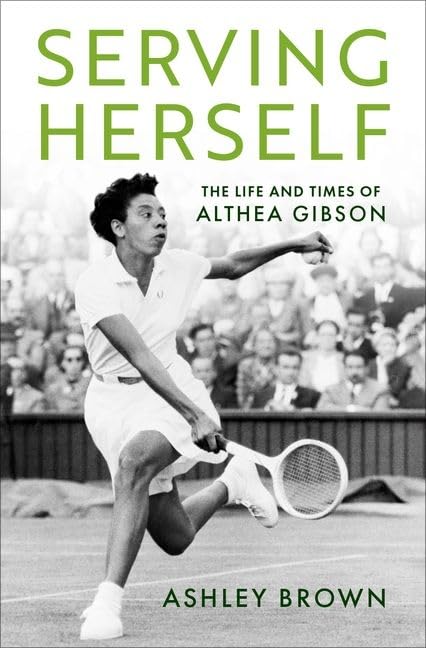Gibson was the first African American to participate in top-tier tennis tournaments like Wimbledon and the US Nationals. After she had spent several years building a reputation for herself on the circuit, the State Department found it politically convenient to send her on a goodwill tour of Asia to refute Soviet arguments that the US was incorrigibly racist. When she won major tournaments, Jet and Ebony published one flattering story after the next; the Chicago Defender, arguably the preeminent Black-owned paper in the country, ran joyous articles predicting that she was destined for more success. After her Wimbledon triumph in 1957, it was Black liberals in New York, along with some of their white allies, who campaigned for a ticker-tape parade.
She was, however, never an easy fit. At the height of her success, she pointedly did not speak out against Jim Crow—nor against personal indignities such as not being allowed to stay in the same hotels as other players during tournaments in the South. “Personally, I prefer to do my battling for racial equality by setting a good example as a professional and as a person,” Gibson told a reporter for the San Francisco Examiner.
Over time, as more radical Black voices came to the fore in both sports and politics, many in the African American media who had previously lionized Gibson grew sharply critical. In 1965, years after Gibson had retired from amateur tennis, Sam Lacy described her in the Baltimore Afro-American as “a successful, if somewhat aloof, representative of colored progress.” As Gibson put it in I Always Wanted to Be Somebody, “Members of the Negro press…beat my brains out regularly.”
She seemed more interested in toying with sexual identity than in breaking through color-coded glass ceilings. Brown’s book describes the vibrancy of the Harlem Renaissance, during which Gibson came of age. The neighborhood streets surrounding her family’s walk-up apartment, overcrowded and poor as they may have been, were home to some of the country’s most famous writers, jazz musicians, and intellectuals. A queer culture had taken root as she grew up, with drag balls, cabarets, and lesbian and gay bars and cafés. As Ann Douglas details in her excellent Terrible Honesty: Mongrel Manhattan in the 1920s (1995), many of Harlem’s most prominent writers, including Langston Hughes and Countee Cullen, were openly gay. “Most of the best-known black male writers on the New York scene were homosexual,” Douglas notes.

